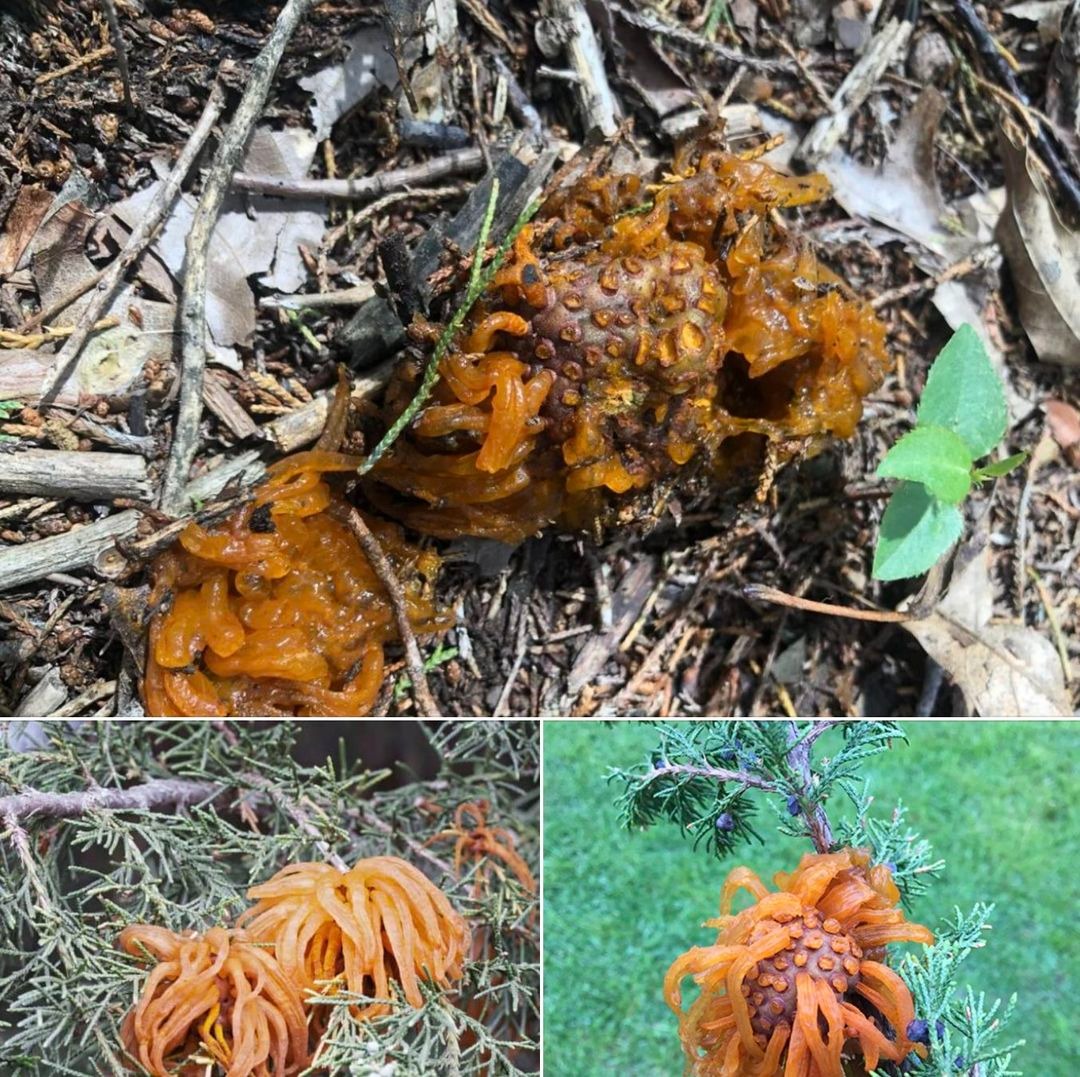Taking care of plants in your backyard can be incredibly rewarding, but it also presents its fair share of challenges. Sometimes, you might encounter something so unusual that it leaves you puzzled. This was the case for a Reddit user in Oklahoma who discovered some strange growths in their trees: large amounts of yellow jelly-like material and something they referred to as a “jelly alien nut.” Intrigued and confused, they turned to the internet for answers.

What they were dealing with was cedar-apple rust, a fungal disease that requires two host plants to complete its life cycle. While apples and crabapples are the most common hosts, juniper trees can also be affected by this disease, despite what the name might suggest. If you’ve come across something similar in your backyard, understanding cedar-apple rust is the first step toward managing it.
Identifying Cedar-Apple Rust
The symptoms of cedar-apple rust vary depending on the type of tree it infects. On juniper trees, you may notice brown, persistent galls growing on the twigs. These galls are hard and round but change dramatically when spring arrives, developing orange, gelatinous horns as the weather becomes wetter. Though this might look concerning, it’s important to note that the juniper tree itself usually remains healthy. Only the twig nearest to the gall might die off, leaving the rest of the tree unaffected.
If you have apple or crabapple trees, the disease manifests differently. Shortly after these trees bloom, you’ll likely spot circular yellow lesions forming on their leaves. As summer progresses, these spots turn into brown tufts or cylindrical tubes that grow under the spots on fruits, twigs, and leaves. While this can impact the tree’s appearance, it usually doesn’t cause significant damage to the tree’s health.
Understanding the Life Cycle of Cedar-Apple Rust
Once you know how to spot cedar-apple rust, it’s helpful to understand its life cycle so you can manage it effectively. The cycle starts when galls form on juniper trees, typically seven months after the initial infection. Over the next 18 months, these galls grow and become gelatinous lumps.
By the following spring, telial horns—spore-producing structures—emerge from golf-ball-sized depressions on the galls. These horns elongate and turn bright orange during wet spring weather. They release spores, which are carried by the wind to infect nearby apple or crabapple trees. After releasing the spores, the horns collapse, dry out, and eventually fall off. The galls, however, stay attached to the tree for another year before they die.
The most visible stage of infection is in the spring when the galls are covered with orange, gelatinous masses, making the disease easy to spot. Fortunately, while these galls can look unsightly, they do not typically cause serious harm to the juniper tree.
Managing Cedar-Apple Rust
Thankfully, cedar-apple rust is manageable, and the steps to handle it are fairly simple. The easiest way to control the spread of the infection is to prune the affected branches on both juniper and apple trees. By cutting away the infected parts, you can reduce the spread of the fungus to other trees in your garden.
For a more preventative approach, you might want to plant apple varieties that are resistant to cedar-apple rust. This can help reduce the risk of infection in the first place. Additionally, you can apply fungicides to susceptible trees, particularly in the spring when the galls are producing spores.
It’s important to remember that cedar-apple rust primarily affects the appearance of your trees. The fungus doesn’t kill the trees, and with proper care, your plants can continue to thrive. By understanding how to manage the disease, you’ll keep your garden looking its best without too much trouble.
Conclusion
In conclusion, cedar-apple rust can be an unusual sight in your backyard, but it doesn’t pose a serious threat to the health of your trees. Knowing how to identify the symptoms and understanding the life cycle of this fungal disease can help you take the appropriate steps to manage it effectively. Whether you prune affected branches, plant resistant apple varieties, or use fungicides to control the infection, you have several options to keep your garden healthy.
While cedar-apple rust may alter the appearance of your trees, it won’t cause lasting damage. Share this knowledge with fellow gardeners to help them recognize and manage cedar-apple rust in their own backyards. With the right approach, you’ll ensure a healthy, thriving garden for years to come. Happy gardening!





